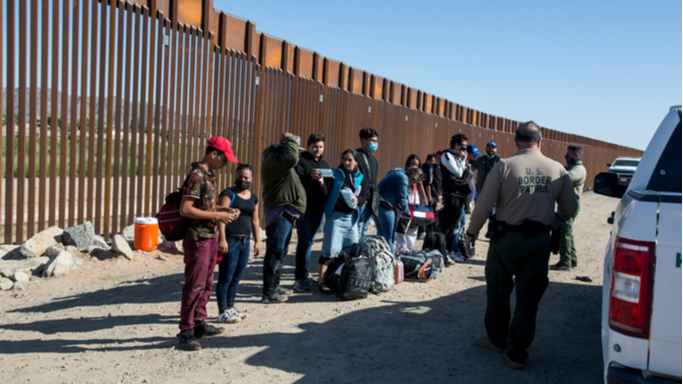America has always been a beacon of hope and opportunity for those seeking a new life. Our country is built on the foundations of immigration, where people from all over the world have come to forge a new beginning. We are a nation that values immigrants, and this welcoming attitude has long been one of our defining features.
However, there is a critical balance to be maintained between our open arms and the rule of law.
The Situation at the Southern Border
Secretary of Homeland Security Alejandro Mayorkas faced intense scrutiny and questioning from the House Judiciary Committee last week—for good reason.
In previous testimony, Secretary Mayorkas affirmed, under oath, that his agency possessed “operational control” of the southern border when questioned specifically on this issue. This is not some throwaway term.
According to the 2006 Secure Fence Act, the law states that in order to have operational control of U.S. borders, DHS must prevent “all unlawful entries into the United States, including entries by terrorists, other unlawful aliens, instruments of terrorism, narcotics, and other contraband.”
DHS does not have operational control given Customs and Border Protection, which falls under Mayorkas’ control, recorded more than 600,000 got-aways in FY 2022.
The term “got away” means an unlawful border crosser who:
(A) is directly or indirectly observed making an unlawful entry into the United States
(B) is not apprehended; and
(C) is not a turn back
Secretary Mayorkas tried to sidestep many of these issues by citing lower numbers of encounters with undocumented migrants in June, with numbers continuing to drop following the expiration of Title 42.
But this is not because of strengthened border control. The decline is attributed to new methods by the Biden administration that allow large numbers of people, who would otherwise be inadmissible, to enter the country.
The current strategy seems to be more about hiding illegal immigration from the public eye rather than actually controlling it. Instead of stopping the flow, the administration is redirecting migrants to enter through land ports or fly directly into the U.S. This has been done through questionable use of parole authority and even promoting the use of the CBP One phone app to an increasing number of migrants.
Customs and Border Protection data may show fewer people entering between the ports of entry along the southern border, but the total encounters across the nation remained high with 211,575 in June alone. That’s more than 7,000 per day.
This situation presents several problems that harm both the United States and the migrants involved.
Impact on Americans
1. National Security Concerns: A porous border can allow not only hopeful migrants but also criminals and potential security threats to enter the country. This puts the safety of American citizens at risk.
2. Economic Strain: An unchecked flow of migrants can put a strain on local economies and social welfare systems.
3. Undermining Legal Immigration: The United States offers several legal pathways for immigration. The chaotic situation at the southern border undermines the system’s integrity, frustrating those who follow the legal process.
Impact on Migrants
1. Humanitarian Crisis: Many migrants undertake the perilous journey with the hope of a better life but find themselves at the mercy of human traffickers, facing abuse, exploitation, and life-threatening conditions.
2. False Promises: The lack of control at the border often leads to misinformation. Migrants may believe they can easily enter the U.S. and stay without legal status, only to find themselves caught in a complex and unforgiving legal system.
3. Impact on Children: The southern border sees a significant number of unaccompanied minors. These children face grave risks during their journey and once they arrive, often end up in overcrowded detention facilities.
The Way Forward
The current situation demands a comprehensive approach that upholds America’s principles of liberty and law. We must recognize that welcoming immigrants is part of our national fabric, but it should occur in a lawful and orderly manner. Some steps to address the issue include:
1. Investing in An All-the-Above Approach: Utilizing physical security measures (i.e. building barriers), advanced technology and increasing personnel can enhance border security, making it more robust and effective.
2. Strengthening Legal Pathways: By making legal immigration more accessible and transparent, we can reduce the incentive for illegal crossings.
3. Address Root Causes: Develop a national security plan and strategy to address political instability, human rights violations, and violence via diplomatic interventions, support for democratic governance, and peace-building initiatives.
4. Bipartisan Collaboration: This issue transcends party lines. A unified, bipartisan approach is vital for creating sustainable solutions.
In conclusion, the porous nature of the U.S. southern border is a complex issue that affects both Americans and migrants. While we must continue to be a country that values and welcomes immigrants, we cannot overlook the importance of maintaining law and order. Striking this balance is the key to ensuring that the United States remains a land of opportunity while preserving the principles that make it great.









